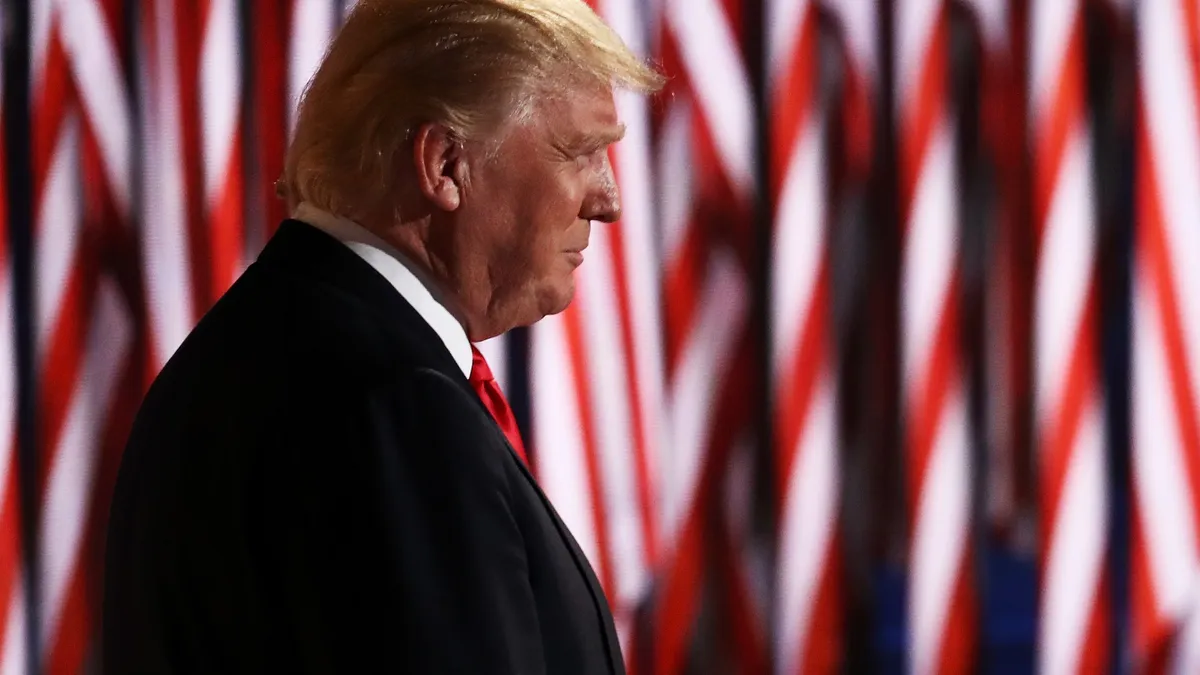UPDATE: Aug. 26, 2019: President Trump struck a more optimistic tone Monday morning after spending the weekend at the G7 Summit in Biarritz, France, making conflicting statements regarding the state of the U.S. trade war with China. Monday morning he tweeted he has "great respect" for Chinese President Xi Jinping and stated "talks are continuing!"
Dive Brief:
- The U.S. will increase the tariff rate on the remaining $300 billion worth of imports from China to 15%, President Donald Trump tweeted Friday afternoon, confirmed by the office of the United States Trade Representative (USTR). These tariffs, which are set to take effect in stages Sept. 1 and Dec. 15, were originally announced Aug. 1 at a rate of 10%.
- According to a press release, the USTR will begin the process of raising the existing 25% tariff on $250 billion worth of Chinese goods to a rate of 30% on Oct. 1, after a public comment period.
- This move comes after China announced tariffs ranging from 5% to 10% on more than 5,000 products imported from the U.S. valued at $75 billion earlier Friday.
Dive Insight:
In a series of tweets, Trump said "China should not have put new Tariffs on 75 BILLION DOLLARS of United States product" and called the move by America's largest trading partner "politically motivated."
This set of tariffs, known as list four, has been in the works for months. The United States Trade Representative (USTR) released details on the list in May, saying the rate could reach as high as 25%. The USTR also held seven days worth of hearings on the tariffs where representatives from a variety of industries voiced disapproval of the tariffs, saying they would disrupt sourcing and threaten margins.
In an earlier series of tweets Friday Trump said: "Our great American companies are hereby ordered to immediately start looking for an alternative to China."
The National Retail Federation responded, saying it was "unrealistic for American retailers" to move out of China. Though Trump does not have the power to give American companies direct orders, he is able to influence their behavior through tariffs, invoking the International Emergency Economic Powers Act and changing federal procurement standards, according to the Washington Post.
The fourth list of tariffs is expected to have a greater impact on consumer goods, including clothing and footwear.
"You can't just re-source at the drop of a hat," Lori Fox, VP of Customs Brokerage Services at American Global Logistics, told Supply Chain Dive after the 10% tariffs were announced earlier this month. "There's no quick and easy answer to this."
This is a developing story and may be updated as events progress.
Correction: A previous version of this story misstated the name of the National Retail Federation.















